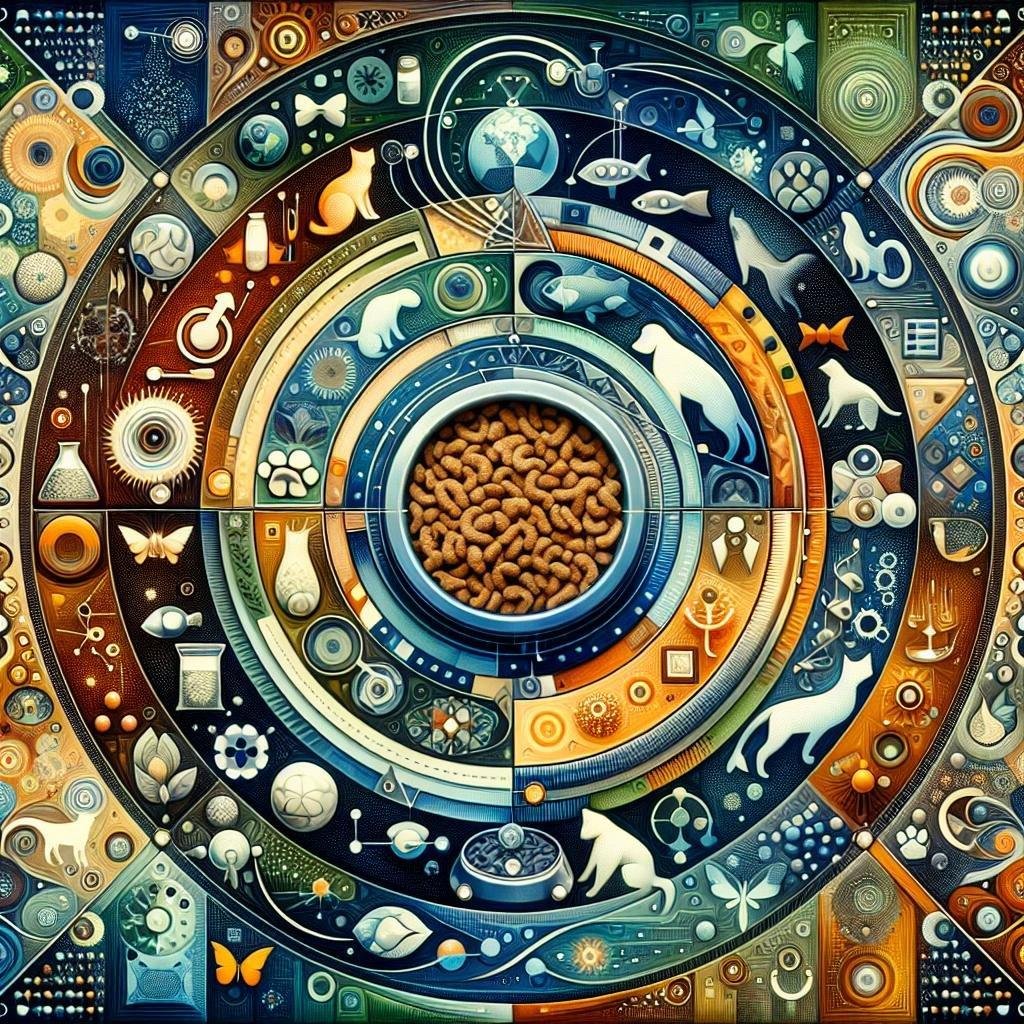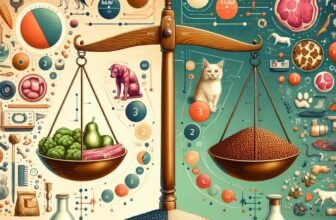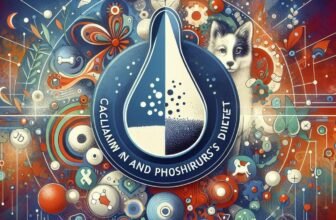
Check out our latest products
In recent years, the pet food industry has witnessed a important shift toward grain-free options, sparking discussions among pet owners, veterinarians, and nutritionists alike. With claims of improved digestion, increased energy levels, and even enhanced coat health, grain-free diets have captured the attention of many who seek to provide the best for their furry companions.but what exactly are the advantages of opting for grain-free pet food? In this article, we will delve into the benefits, potential drawbacks, and considerations to keep in mind when choosing a diet that eliminates grains.Whether you’re curious about how these diets might affect your pet’s health or simply looking to stay informed about the latest trends in pet nutrition, join us as we explore the ins and outs of grain-free pet food options.
Table of Contents
- Understanding Grain-Free Pet Food and Its Popularity
- Nutritional Benefits of Grain-Free Diets for Pets
- Potential Health Considerations to Keep in Mind
- Guidance on Choosing the Right Grain-Free Options for Your Pet
- Future outlook
Understanding Grain-Free Pet Food and Its Popularity
In recent years, grain-free pet food has gained significant traction among pet owners looking for option diets for their furry companions. Many believe that grains like wheat, corn, and soy can contribute to allergies and digestive issues in some pets. This belief has led to an increase in demand for diets that primarily consist of protein and vegetables. Some key benefits of grain-free diets include:
- Improved digestion: Many pet owners report that their pets experience less bloating and discomfort.
- Enhanced energy levels: A higher protein content frequently enough leads to increased vitality.
- Better skin and coat health: Some pets show improvements in coat sheen and reduce itching.
However, it’s essential to approach grain-free diets with caution, as not all formulations are created equal. Some grain-free products may rely heavily on high-starch ingredients like potatoes and peas, wich can lead to other health concerns, including potential risks of heart disease. When assessing grain-free options, consider the following:
| Consideration | Importance |
|---|---|
| Ingredient Sourcing | Quality ingredients promote health. |
| protein Source | Higher quality proteins support muscle and overall health. |
| Nutritional balance | A well-rounded diet is essential for overall wellness. |
nutritional benefits of Grain-Free Diets for Pets
Adopting a grain-free diet for pets offers numerous nutritional benefits that can contribute to a healthier and more vibrant life. Many pets can experience digestive sensitivities to grains, which can result in uncomfortable symptoms such as gas, bloating, or allergies. By eliminating grains from their diet, pet owners may find that their furry friends enjoy improved digestive health. Grain-free formulas often rely on high-quality protein sources and wholesome vegetables, providing essential nutrients without the potential irritants found in conventional grain-based foods.
Furthermore, grain-free pet diets can enhance overall energy levels and vitality. They typically include ingredients that are rich in antioxidants and healthy fats, promoting not only better skin and coat conditions but also supporting cognitive function. Benefits often observed with grain-free diets include:
- Enhanced digestion: Easier absorption of nutrients.
- Weight management: Higher protein content helps maintain lean muscle mass.
- Reduced allergy symptoms: Fewer allergens can lead to diminished reactions.
To further illustrate the nutritional profiles of different grain-free options, the following table summarizes popular ingredients found in these diets, highlighting their key benefits:
| Ingredient | Benefits |
|---|---|
| Sweet Potatoes | Rich in fiber and vitamins, promoting digestive health. |
| Peas | High in protein and essential amino acids. |
| Quinoa | Complete protein with a balanced amino acid profile. |
| Chickpeas | Source of protein and fiber, supports a healthy weight. |
Potential Health Considerations to Keep in Mind
When considering grain-free pet food options, it’s essential to be aware of potential health implications for your furry freind.Some pets may experience a lack of essential nutrients if their diet is not properly balanced. Grain-free diets can sometimes lead to a deficiency in key vitamins and minerals, particularly if they are heavily reliant on alternative carbohydrates. it is important to ensure the substitute ingredients provide necessary nutritional benefits. Consider the following factors:
- Protein Sources: ensure the food contains high-quality proteins from animal sources to support overall health.
- Fatty Acids: Look for added omega-3 and omega-6 fatty acids to promote a healthy coat and skin.
- Digestive Health: choose products with prebiotics and probiotics to enhance gut health and digestion.
Another area of concern could be the relationship between grain-free diets and heart disease, particularly dilated cardiomyopathy (DCM). Recent studies have suggested a possible link between certain grain-free diets and a higher risk of DCM, particularly in breeds predisposed to the condition. While more research is necessary, pet owners should remain vigilant and discuss any dietary changes with their veterinarian. Here are some tips:
- Monitor Your Pet: Watch for signs of heart issues, such as coughing or lethargy.
- Vet Consultation: Consult your veterinarian before switching to a grain-free diet to evaluate your pet’s specific needs.
- Diet Variety: Incorporate a variety of protein sources to help mitigate any risk factors associated with specific formulations.
Guidance on Choosing the Right Grain-Free Options for Your Pet
When selecting the ideal grain-free food for your pet, it’s essential to prioritize their unique nutritional needs.Start by assessing their specific health requirements, age, and activity level. Consider the following factors to help guide your choice:
- Protein sources: opt for high-quality animal proteins like chicken, beef, or fish as primary ingredients.
- vegetable alternatives: Look for healthy vegetable and fruit substitutes like sweet potatoes, peas, or blueberries, which can provide essential nutrients.
- Life stage: ensure the selected food is appropriate for your pet’s life stage—puppy, adult, or senior—as requirements differ.
It’s also important to investigate potential allergens and ensure that any grain-free option aligns with your pet’s dietary restrictions. Reading the ingredient list is crucial; choose brands that prioritize transparency and high-quality ingredients. Additionally, consider seeking recommendations from your veterinarian or pet nutritionists. You might find the following table helpful in making a well-informed decision:
| Brand | Protein Content | Vegetable Sources | Recommended For |
|---|---|---|---|
| Brand A | 30% | Sweet Potatoes, Peas | All Life Stages |
| Brand B | 28% | Potatoes, Carrots | Puppies |
| Brand C | 32% | pumpkin, Blueberries | Adults |
Future Outlook
as we navigate the ever-evolving landscape of pet nutrition, grain-free options present an appealing alternative for many pet owners seeking to enhance their furry friends’ diets. With benefits ranging from improved digestibility to potential allergy relief, grain-free pet food can cater to specific health needs while also encouraging a more natural diet. However, it’s essential to remember that not all pets require a grain-free diet, and consulting with a veterinarian is crucial to determine what’s best for your dog or cat. By being informed and considering all available options, you can make the best dietary choice for your pet’s unique requirements.As with any significant dietary change, careful observation and gradual introduction of new foods can lead to a happier, healthier pet. Happy exploring!










